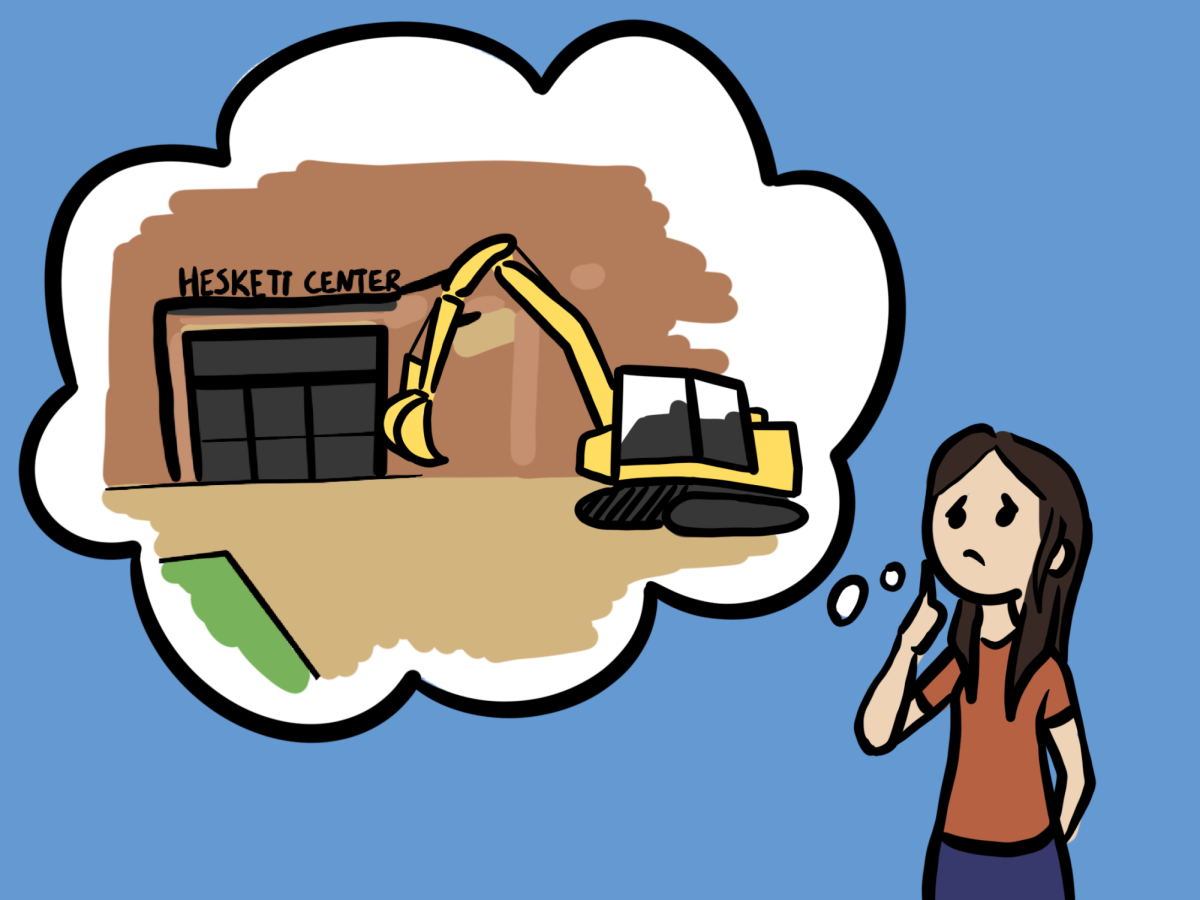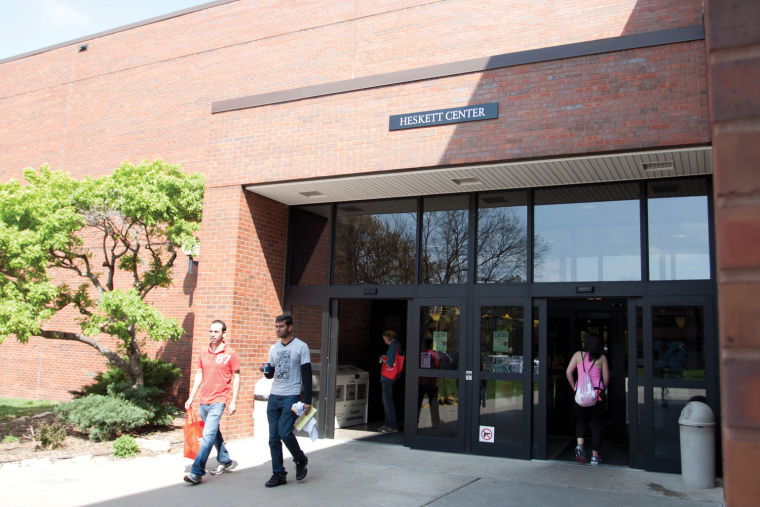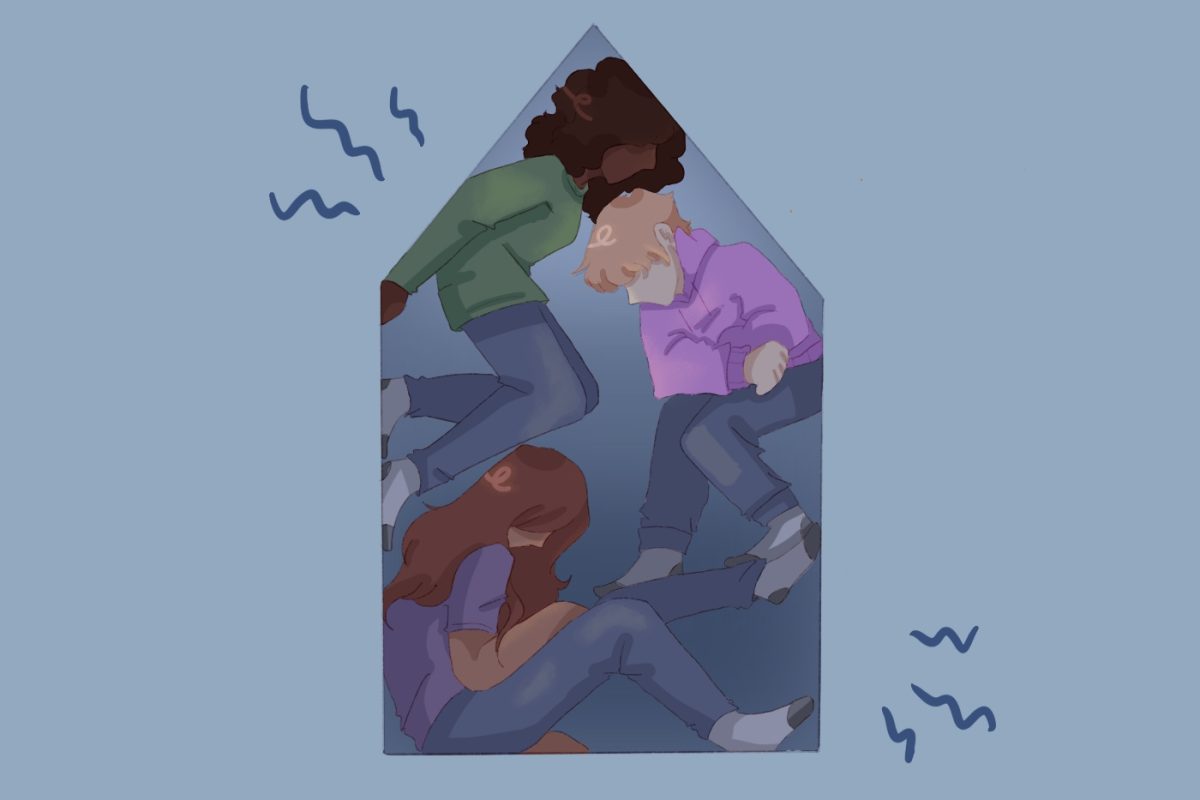While Wichita State’s Heskett Center could use a few upgrades to better serve the athletic students around campus, tearing it down completely disregards its value and function for students.
WSU’s master plan includes demolishing the Heskett Center to make room for an indoor track facility, outdoor tennis courts and grass playing fields. Wichita State’s 2024 master plan update outlines a vision for the next decade, aiming to expand its facilities and align with goals like student-centeredness, research and community engagement.
The plan consists of many demolitions, renovations and rerouting of businesses and roads. The changes are supposed to support WSU in bridging “between academics and industry” by updating old buildings and introducing new opportunities to learn with new upgrades and experiences across campuses.
A significant part of this vision involves demolishing a plethora of buildings, including the Heskett Center.
While the Heskett Center could benefit from — and very much needs — an update, demolishing and relocating it entirely is unnecessary.
The university claims these changes aim to increase recreation space within the main campus, but the plans feel excessive and shortsighted. A thoughtful renovation would address any issues while maintaining continuity for students and preserving the facility’s current role on campus.
Take, for instance, Clinton Hall — the former home of Barton School of Business — being completely redone. Now, it has a new purpose: the Shocker Success Center. There was not a complete demolition and the building continues to serve a purpose on campus.
But the Heskett Center is not the only athletic facility at WSU, and relocating it will not consolidate campus athletics. If the goal is expansion, why not add new structures on available or underutilized land? The land at the intersection already holds potential for an existing entity to expand.
The push for demolition and rebuilding appears more like a trend than a necessity, and it raises questions about the sustainability and financial prudence of such decisions. From the pickleball courts already in shambles to construction next to the softball field, everything has some sort of deconstructing process.
Instead of pouring resources into demolition, the university should focus on improving and enhancing existing spaces. WSU could demonstrate its commitment to sustainability and fiscal responsibility by renovating the Heskett Center and expanding the athletic facilities elsewhere.
The money dedicated to the demolition and new build of the Heskett Center should be moved toward a new dorm project. Returning students will be further limited to The Flats, which is saved for scholarship students. It is a battle to try and live on campus — a battle the university continues to fuel. But ultimately, the university chooses to dedicate its time and money to wasting resources and tearing down school history.
Sometimes, progress doesn’t require starting from scratch — it just needs a little creativity and patience.










Katie • Feb 24, 2025 at 4:08 pm
Thank you for writing in support of the Heskett Center. It’s a great space, and I’ve been a member since 2010 when I joined WSU’s faculty. Notably, the Heskett Center has a beautiful indoor pool (the best in Wichita) that serves students and community members. There is no pool in WSU’s master plan. And with the city of Wichita replacing municipal pools with splash pads, access to water safety, aquatics education, and pool space to actually practice in is diminished in our community. WSU should maintain its aquatics facility for students, WSU employees, and the broader Wichita community. All YMCA members have access to the pool. And in the summertime, the Boys and Girls Clubs of Wichita have regularly received aquatics safety and education classes through a grant led by WSU’s Aquatics Director. Save the Heskett Center! Save the pool!
Rich • Feb 24, 2025 at 6:57 am
Seems like public supported entities are always tearing down and building new instead of remodel.
Anonymous • Mar 9, 2025 at 1:38 am
Seems like WSU is constantly building — to support the “empire building” of specific departments, and the greed of local developers who kick back lots of money to state officials (campaign donations, etc.), who, in turn, allow this largely egregious, endless construction — at public (and especially student) expense.
And Koch’s plan (notice his surrogates and former employees, and their lackeys now dominate the governance of Kansas higher education) is to replace PUBLIC-funded facilities (including schools and colleges) with PRIVATE-owned/controlled facilities (exploiting students for profit). Hence the sprawling PRIVATE commercial enterprises on campus, largely pushing out PUBLIC education.
Their obvious long-term plan for Heskett is to replace a public facility with a privately owned / controlled YWCA (ostensibly “non-profit” — but notoriously NOT free, and therefore not really open to all) — as they have already mostly done with Wichita’s public pools and other public recreation facilities.
Nobody is more determined to subvert PUBLIC resources than the king of Privatization: manipulator-extraordinare Charles W. Koch (via his countless front-organizations, shell-organizations, minions, surrogates and personally selected substitutes). Look behind the veil, and you find him — Wichita’s Wicked Wizard of Oz.